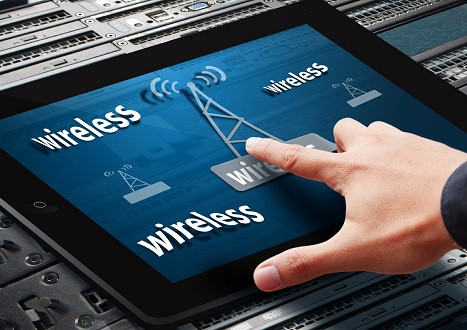- Home
- Video Courses
- Certifications
- CWSP-206: CWSP Certified Wireless Security Professional Dumps


CWSP-206: CWSP Certified Wireless Security Professional Certification Video Training Course
CWSP-206: CWSP Certified Wireless Security Professional Certification Video Training Course includes 12 Lectures which proven in-depth knowledge on all key concepts of the exam. Pass your exam easily and learn everything you need with our CWSP-206: CWSP Certified Wireless Security Professional Certification Training Video Course.
Curriculum for CWNP CWSP-206 Certification Video Training Course



CWSP-206: CWSP Certified Wireless Security Professional Certification Video Training Course Info:
The Complete Course from ExamCollection industry leading experts to help you prepare and provides the full 360 solution for self prep including CWSP-206: CWSP Certified Wireless Security Professional Certification Video Training Course, Practice Test Questions and Answers, Study Guide & Exam Dumps.
CWSP-206 Wireless Security Professional Training Program
Course Overview
Introduction to Wireless Security Professional Training
The Certified Wireless Security Professional CWSP-206 is a globally recognized certification designed for IT professionals who want to specialize in securing enterprise wireless networks. This course provides a deep exploration of the core principles, modern techniques, and industry best practices required to manage wireless security in complex environments. With the rise of wireless networks in every sector including healthcare, finance, government, education, and retail, ensuring a secure wireless infrastructure has become one of the most important priorities for organizations worldwide. The CWSP-206 certification validates the skills needed to identify threats, design security policies, configure protections, and monitor wireless environments against evolving risks.
Importance of Wireless Security in Modern Networks
In the modern digital landscape, nearly every business relies on wireless connectivity to improve operations, efficiency, and user mobility. While this convenience accelerates growth, it also creates exposure to sophisticated cyberattacks. Wireless networks are inherently more vulnerable compared to wired networks because radio signals can extend beyond physical boundaries. Attackers can exploit vulnerabilities without direct physical access, which makes wireless security a constant concern. The CWSP-206 course emphasizes not only technical controls but also the ability to design layered security architectures that balance usability and resilience against attacks.
Alignment with Industry Standards and Practices
The CWSP-206 course aligns with industry frameworks and global best practices, ensuring that learners acquire knowledge relevant to real-world environments. The course draws upon standards defined by the Wi-Fi Alliance, IEEE, and regulatory bodies. It integrates knowledge of wireless encryption standards, authentication mechanisms, intrusion detection strategies, and risk management frameworks. By completing this training, learners develop the competence to manage compliance requirements, adhere to data protection regulations, and maintain secure enterprise networks.
Skill Development through Practical Learning
The course is structured to bridge theory with practice. Participants will explore wireless security concepts in depth and also engage with practical applications through labs, scenarios, and design activities. Skills developed include configuring advanced wireless encryption methods, securing access points, integrating wireless networks with corporate authentication systems, deploying monitoring solutions, and responding to wireless incidents. Learners gain confidence not only in passing the CWSP-206 exam but also in solving real security challenges faced in professional environments.
Career Relevance of the CWSP-206 Certification
Wireless security professionals are in high demand as organizations adopt wireless-first strategies. The CWSP-206 certification enhances the credibility of IT practitioners in roles such as network security engineers, wireless architects, IT managers, and security consultants. Certified professionals stand out for their expertise in protecting wireless infrastructures, reducing risks, and aligning security strategies with business needs. With wireless devices continuously expanding in enterprise environments, the ability to secure and manage them is a skillset valued across industries.
Course Delivery Format
This training course is designed to be flexible for diverse learners. It may be taken in instructor-led classrooms, online platforms, or blended learning modes. Each format integrates theoretical instruction with applied scenarios, making sure participants gain holistic understanding. The modules within this course progress logically from foundational wireless concepts to advanced security practices, ensuring learners build on knowledge step by step until they can independently handle complex wireless environments.
Modules
Module One Introduction to Wireless LAN Security
This module provides the foundational knowledge of wireless security by revisiting basic wireless LAN concepts and the inherent vulnerabilities of wireless networks. It explains how radio frequency transmission can be intercepted, analyzed, and exploited. Learners examine why wireless communication needs stronger protection than traditional wired networks. The module explores the different types of wireless attacks, including eavesdropping, man in the middle attacks, denial of service attacks, and rogue access point threats. Learners also gain a historical perspective of wireless security evolution, starting from WEP to WPA3, and understand why older protocols failed to provide sufficient protection.
Module Two Authentication and Access Control in Wireless Networks
This module explores the methods used to authenticate users and devices on a wireless network. The course examines enterprise authentication models, focusing on the use of IEEE 802.1X authentication, EAP protocols, and RADIUS servers. Learners will understand the differences between personal and enterprise modes of Wi Fi security and why enterprise environments require centralized and scalable authentication systems. The importance of multifactor authentication, digital certificates, and secure key management is emphasized. By the end of this module, participants will have the knowledge required to implement robust identity verification systems for wireless networks.
Module Three Encryption Standards and Secure Communications
This module dives deeply into encryption technologies used in wireless communication. It begins with an overview of WEP and its vulnerabilities, then transitions to WPA and WPA2, focusing on their encryption algorithms such as TKIP and AES. Learners will then explore WPA3, the latest wireless security standard, which introduces enhanced encryption methods, protection against dictionary attacks, and stronger session initiation processes. This module provides practical exercises in configuring wireless encryption settings, understanding key hierarchies, and ensuring that encryption is properly implemented in real deployments.
Module Four Wireless Intrusion Prevention and Detection Systems
This module focuses on monitoring and defending wireless environments against intrusions. Learners will explore Wireless Intrusion Detection Systems WIDS and Wireless Intrusion Prevention Systems WIPS, understanding how they detect rogue access points, unauthorized devices, and abnormal network activity. The module explains signature based detection, behavior based detection, and machine learning driven security analytics. Practical aspects include deploying sensors, analyzing alerts, and tuning detection systems to minimize false positives while ensuring strong protection against threats.
Module Five Security Policies and Risk Management for Wireless Networks
This module highlights the importance of organizational security policies in securing wireless infrastructures. Learners are introduced to risk management frameworks that help in identifying threats, assessing vulnerabilities, and prioritizing risks. The module explains how to write effective security policies, define acceptable use guidelines, and enforce compliance. It also emphasizes the human factor, exploring social engineering attacks that target wireless users. By the end of this module, learners will be capable of creating comprehensive wireless security strategies that align technical measures with organizational governance.
Module Six Secure Wireless Network Design and Architecture
This module provides knowledge on designing secure wireless architectures from the ground up. Learners explore concepts such as secure SSID management, segmentation of guest and enterprise networks, secure roaming protocols, and integrating wireless networks into enterprise firewalls and intrusion detection solutions. Special focus is given to securing cloud managed wireless networks and hybrid environments. Learners are guided through scenarios where they must design wireless architectures that meet business requirements while minimizing attack surfaces.
Module Seven Monitoring, Troubleshooting, and Incident Response
This module emphasizes operational management of wireless security. Learners study methods of continuous monitoring using logging, alerts, and automated analysis systems. The module covers troubleshooting common wireless security problems such as failed authentication, interference, and unauthorized device detection. It also explores structured incident response methodologies that guide professionals in detecting, containing, and eradicating wireless threats. Practical skills gained include analyzing logs, conducting forensic investigations of wireless traffic, and restoring secure operations after incidents.
Module Eight Emerging Wireless Security Technologies
The final module of this section explores advanced and emerging technologies in wireless security. It covers areas such as secure Wi Fi 6E deployments, integration with Zero Trust Network Access ZTNA models, the role of artificial intelligence in wireless security monitoring, and the challenges of securing Internet of Things devices that connect through wireless networks. Learners will also examine how 5G and private wireless networks impact enterprise security strategies. By completing this module, learners gain foresight into future challenges and innovative approaches to securing next generation wireless systems.
Requirements of the Course
Introduction to Course Requirements
The Certified Wireless Security Professional CWSP-206 training course is designed with specific requirements in mind to ensure that participants are prepared to absorb the knowledge and develop the skills necessary to secure wireless networks effectively. These requirements are not intended to discourage learners but to provide a framework that enhances the learning experience. They establish the foundation for understanding advanced topics in wireless security, guiding participants toward mastery of the subject matter.
Academic Background Expectations
Although the CWSP-206 course is open to a wide range of professionals, it is generally recommended that participants have a basic academic background in computer science, information technology, or related fields. A formal degree is not mandatory, but prior exposure to IT concepts creates a smoother transition into advanced wireless security topics. Individuals who have studied networking fundamentals in academic programs or self-study environments are better positioned to understand complex material presented in this course.
Prerequisite Knowledge of Wireless Technologies
A core requirement for learners is a working understanding of wireless LAN technologies. Participants are expected to know how wireless networks operate, including concepts such as radio frequency, access points, wireless clients, and basic configuration of Wi-Fi systems. Familiarity with wireless standards, including IEEE 802.11, provides essential context when discussing security mechanisms. Learners who have already studied or achieved the CWNA certification will have a solid foundation, though it is not a mandatory prerequisite. This familiarity allows them to focus on security-specific material rather than learning wireless fundamentals from scratch.
Networking Knowledge and Protocols
The CWSP-206 course requires participants to have a solid grasp of general networking concepts. Understanding IP addressing, subnetting, routing, and switching is essential for analyzing how wireless devices integrate into enterprise networks. Familiarity with protocols such as TCP, UDP, DHCP, and DNS is critical because wireless security often depends on how these protocols interact with authentication and encryption systems. Learners who possess this foundational networking knowledge can connect wireless-specific issues with broader enterprise security considerations.
Security Fundamentals as a Requirement
Another important requirement is a basic understanding of information security principles. Learners should be familiar with concepts such as encryption, authentication, authorization, and access control. While the CWSP-206 course will explore these topics in greater depth from a wireless perspective, prior exposure ensures that learners can engage with material at an advanced level without struggling with foundational definitions. Basic awareness of firewalls, intrusion detection systems, and VPNs is also recommended, as these technologies often intersect with wireless security.
Technical Skills and Hands-On Experience
To succeed in this course, learners are expected to have some practical experience in configuring wireless access points, client devices, and security policies. The CWSP-206 training emphasizes applied knowledge, so having the ability to navigate device interfaces, troubleshoot basic connectivity issues, and interpret logs will help learners progress more effectively. Technical familiarity with command-line interfaces, configuration utilities, and network monitoring tools is highly beneficial. While the course provides lab opportunities, prior experience ensures participants can focus on applying security solutions rather than learning basic device operation.
Hardware and Software Requirements for the Training
To participate fully in the CWSP-206 training course, learners should have access to suitable hardware and software. A laptop or workstation with modern processing capability, adequate memory, and updated operating systems is necessary for running wireless analysis tools and simulation environments. Wireless network interface cards that support monitoring and packet capture are highly recommended for lab work. Software such as Wireshark, wireless security analyzers, and virtual machine environments may also be required to complete exercises. Learners should be prepared to install and configure these tools to practice the techniques taught during the course.
Language and Communication Requirements
The CWSP-206 course is delivered in English, and therefore a good command of technical English is required. Participants should be comfortable reading technical documentation, following instructor explanations, and engaging in discussions about wireless technologies. Since wireless security involves many acronyms, technical terms, and industry jargon, comprehension skills in English are essential. Written communication is also important because learners may be required to produce documentation such as security policies, configuration guides, or risk assessment reports as part of their learning process.
Professional and Industry Requirements
In addition to academic and technical prerequisites, the CWSP-206 course has professional expectations. Learners are encouraged to have at least one to two years of experience in networking, information security, or wireless technology roles. While it is possible to enroll without this experience, professionals who have worked in IT environments will find it easier to connect theoretical material with practical applications. Employers often prefer certified individuals who not only understand exam objectives but can also apply them in real scenarios, so having relevant work experience enhances both the learning process and career outcomes.
Time Commitment and Study Requirements
Completing the CWSP-206 training requires a significant time commitment. Learners should allocate sufficient hours each week for study, practice, and review. While classroom or online sessions provide structured instruction, independent study is equally important. Participants should dedicate time to reading course material, experimenting with labs, practicing configuration, and reviewing security standards. Success in this course and the associated certification exam depends on consistent effort, disciplined study, and practice. Learners who invest time in revisiting complex topics and applying concepts in different scenarios develop the depth of understanding required for professional success.
Mental Preparedness and Analytical Skills
Wireless security is a field that requires sharp analytical and problem-solving skills. Learners entering this course should be mentally prepared for complex material and challenging scenarios. They must develop the ability to analyze wireless traffic, identify patterns of attacks, and design solutions that address both technical and organizational challenges. Critical thinking, patience, and persistence are key requirements for professionals working with wireless security. This training builds those skills, but learners must be ready to engage deeply with each concept, question assumptions, and apply knowledge creatively to solve security problems.
Laboratory Environment Requirements
Since wireless security cannot be mastered through theory alone, learners are expected to engage with laboratory environments that replicate real-world scenarios. This may include virtual labs provided by training vendors or self-constructed home labs using wireless access points, client devices, and security appliances. Participants should prepare to configure multiple SSIDs, experiment with authentication methods, capture and analyze traffic, and simulate attacks to understand how security solutions respond. Setting up a proper lab environment ensures that learners transition from theoretical understanding to hands-on capability, which is critical for exam success and workplace application.
Examination Preparation Requirements
The CWSP-206 certification exam is rigorous, testing both theoretical knowledge and practical understanding of wireless security. Learners must be prepared to commit to exam preparation in addition to course participation. This includes reviewing official study guides, practicing exam-style questions, and reinforcing knowledge through labs. A requirement for success is the ability to manage exam stress, interpret questions carefully, and apply learned principles quickly under timed conditions. The course prepares learners for this process, but dedication to exam preparation is a personal responsibility that each participant must fulfill.
Organizational Support as a Requirement
For professionals sponsored by employers, organizational support is a requirement that enhances the learning journey. Companies that provide time, resources, and lab access to employees enable them to focus fully on mastering course objectives. While self-study is possible, organizational investment in employee training demonstrates the value of the certification and ensures that learners have the environment they need to succeed. This mutual commitment between learner and employer strengthens the relevance of the course in practical workplace contexts.
Continuous Learning as an Ongoing Requirement
Wireless security is a dynamic field where technologies evolve rapidly and new threats emerge continuously. A key requirement of the CWSP-206 training is the mindset of continuous learning. Learners must accept that completing the course and passing the certification exam is not the endpoint but rather the beginning of a professional journey. Continuous study of new standards, tools, and attack techniques is essential. The requirement for ongoing professional development ensures that certified individuals remain relevant, skilled, and capable of protecting networks against evolving risks.
Course Descriptions and Who This Course Is For
Introduction to the CWSP-206 Course Description
The Certified Wireless Security Professional CWSP-206 course is designed as an advanced-level program that provides deep technical knowledge and practical skills in securing wireless networks. It is a continuation of foundational wireless concepts but focuses exclusively on the mechanisms, strategies, and technologies needed to defend enterprise-grade wireless infrastructures. The course offers a balance of conceptual learning and hands-on application so that learners can not only understand the theory of wireless security but also demonstrate the ability to configure, monitor, and troubleshoot secure wireless environments. By the end of the training, participants are equipped with both the confidence and competence to handle modern wireless security challenges.
Scope of the Course
The CWSP-206 course spans across multiple domains of wireless security. Its scope covers everything from authentication frameworks and encryption standards to wireless intrusion prevention, monitoring, and incident response. The course explores advanced topics such as wireless penetration testing, cloud-managed wireless security, secure wireless design, and emerging technologies like Wi-Fi 6E and 5G. It also emphasizes the importance of governance, risk management, and compliance in wireless deployments. The broad scope ensures that learners gain comprehensive expertise, allowing them to apply solutions to diverse industries and scenarios.
Learning Objectives of the Course
The primary learning objective of CWSP-206 is to prepare professionals to protect enterprise wireless environments against threats. Learners develop the ability to analyze vulnerabilities, select appropriate countermeasures, and integrate wireless security into overall network security strategies. Additional objectives include mastering encryption protocols, deploying enterprise authentication systems, configuring intrusion detection systems, designing secure architectures, and responding effectively to wireless incidents. By fulfilling these objectives, learners gain practical competence in real-world scenarios while also preparing to succeed in the CWSP-206 certification exam.
Structure of the Course
The course is structured into progressive modules that guide learners step by step from basic to advanced security topics. Each module builds upon the knowledge of the previous one, ensuring smooth transitions and coherent understanding. For example, learners first review wireless fundamentals, then move to authentication and encryption, and later engage with intrusion detection, policy development, and incident response. This structured approach reflects the lifecycle of wireless security, from design and implementation to monitoring and continuous improvement. The structure ensures that learners not only acquire knowledge but also develop workflows that mirror professional practices.
Delivery Methods of the Course
The CWSP-206 course is delivered through flexible methods suitable for a variety of learners. It is available in classroom-based formats for those who prefer direct instructor guidance, online live training sessions for those who want interactive remote learning, and self-paced digital platforms for professionals who prefer independent study. Each delivery method incorporates theoretical lessons, lab exercises, and scenario-based discussions. The combination of delivery formats ensures that the course remains accessible and effective regardless of learning style, geographic location, or professional commitments.
Duration and Intensity of the Training
The duration of the CWSP-206 training course may vary depending on delivery mode, but it typically spans several days of intensive instruction or multiple weeks of online study. The intensity of the course requires learners to stay highly engaged throughout each session. Every segment of the course integrates lectures, demonstrations, and labs, ensuring that learners constantly reinforce knowledge with practice. This intensity is necessary because wireless security involves complex technologies that cannot be mastered through theory alone. Participants who commit to the duration of the training experience a transformation from basic understanding to advanced proficiency.
Hands-On Lab Work in the Course
A defining characteristic of the CWSP-206 course is its focus on practical lab work. Learners are given opportunities to configure enterprise wireless systems, implement encryption protocols, deploy intrusion prevention sensors, and analyze wireless traffic using industry-standard tools. The labs replicate real-world environments where learners can experiment with both defensive and offensive techniques. By working hands-on with wireless infrastructure, learners develop confidence in handling real scenarios such as detecting rogue devices, troubleshooting authentication failures, and responding to attacks. The practical component ensures that participants leave the course with skills they can immediately apply in the workplace.
Industry Alignment of the Course Content
The CWSP-206 course has been designed to align closely with industry standards, regulatory requirements, and organizational security frameworks. The knowledge gained is directly applicable to industries that rely heavily on wireless infrastructures such as healthcare, finance, education, and government. The course integrates elements of compliance with laws such as GDPR and HIPAA where relevant to wireless security. Learners gain an appreciation of how technical controls must be balanced with legal and organizational requirements, making them more effective professionals in environments where security is both a technical and business priority.
Who This Course Is For Introduction
The CWSP-206 training course is intended for a specific audience of professionals who are already working in or aspiring to work in the field of wireless networking and security. While the course is advanced in nature, its structured approach makes it suitable for learners who have foundational knowledge of wireless technologies and wish to specialize in securing them. Understanding the intended audience helps participants evaluate whether this course aligns with their career goals, skill level, and professional aspirations.
IT Security Professionals
The course is particularly relevant for IT security professionals who are responsible for defending organizational infrastructures. Security analysts, engineers, and consultants who wish to expand their expertise into wireless environments find this course highly valuable. For these professionals, the course provides specialized knowledge that complements their broader security skill set. It enables them to manage wireless-specific threats, design secure architectures, and integrate wireless security into enterprise-level strategies.
Network Administrators and Engineers
Network administrators and engineers who configure, maintain, and troubleshoot enterprise networks are also an ideal audience for the CWSP-206 course. These professionals often encounter wireless technologies as part of their daily responsibilities. By gaining advanced wireless security skills, they are able to prevent vulnerabilities, enforce strong access controls, and ensure reliable performance without compromising security. For network administrators, the CWSP-206 training elevates their ability to secure networks beyond traditional wired protections.
Wireless LAN Designers and Architects
Another group of professionals who benefit greatly from this training are wireless LAN designers and architects. These individuals are tasked with creating wireless infrastructures that are scalable, reliable, and secure. The CWSP-206 course equips them with the knowledge to design networks that incorporate layered security, prevent unauthorized access, and comply with regulatory standards. Architects who complete this course gain the credibility and expertise to deliver secure wireless solutions that support organizational goals while reducing risks.
Consultants and Security Advisors
Independent consultants and security advisors who work with clients across different industries also form an important segment of the audience for the CWSP-206 course. These professionals are often required to assess existing wireless infrastructures, recommend improvements, and implement security measures. The course equips them with a comprehensive toolkit for evaluating risks, designing solutions, and ensuring that wireless environments remain resilient against evolving threats. Certification provides them with added credibility, enabling them to establish stronger trust with clients.
Students and Aspiring Professionals
Although the CWSP-206 course is advanced, motivated students and aspiring professionals with a strong interest in wireless security can also pursue this training. For those at the early stages of their careers, the course provides a clear specialization path that distinguishes them from peers. Students who aim to enter cybersecurity fields find the CWSP-206 certification to be a valuable credential that demonstrates advanced capabilities in wireless environments, making them attractive candidates for employers.
Organizational Teams and Enterprises
The course is not only for individuals but also for teams within organizations that deploy and manage wireless infrastructures. Companies often sponsor groups of IT staff to complete CWSP-206 training together, ensuring that the entire team shares a consistent understanding of wireless security practices. This team-based learning approach improves collaboration, reduces security gaps, and enhances the resilience of enterprise networks. Organizations that invest in CWSP-206 training for their employees demonstrate a proactive commitment to safeguarding business operations.
Career Growth and Professional Advancement
For all intended participants, the CWSP-206 course offers clear pathways to career growth and advancement. Security professionals gain recognition as subject matter experts, network administrators transition into specialized roles, and consultants expand their service portfolios. The certification that accompanies the course serves as a formal validation of skills, opening opportunities for promotions, higher salaries, and advanced responsibilities. By completing the CWSP-206 training, professionals position themselves as leaders in the specialized field of wireless security.
Why This Course Matters for Professionals
The CWSP-206 course matters because wireless security is no longer an optional skill. With the widespread adoption of mobile devices, IoT systems, cloud applications, and remote work models, organizations cannot afford to leave wireless infrastructures unprotected. Professionals who complete this course not only learn how to secure existing systems but also how to adapt to future technologies and evolving attack strategies. This adaptability makes them valuable assets to organizations that depend on secure and reliable wireless connectivity.
Student Feedback
Similar CWNP Video Courses





Only Registered Members Can Download VCE Files or View Training Courses
Please fill out your email address below in order to Download VCE files or view Training Courses. Registration is Free and Easy - you simply need to provide an email address.
- Trusted By 1.2M IT Certification Candidates Every Month
- VCE Files Simulate Real Exam Environment
- Instant Download After Registration.
Log into your ExamCollection Account
Please Log In to download VCE file or view Training Course
Only registered Examcollection.com members can download vce files or view training courses.




